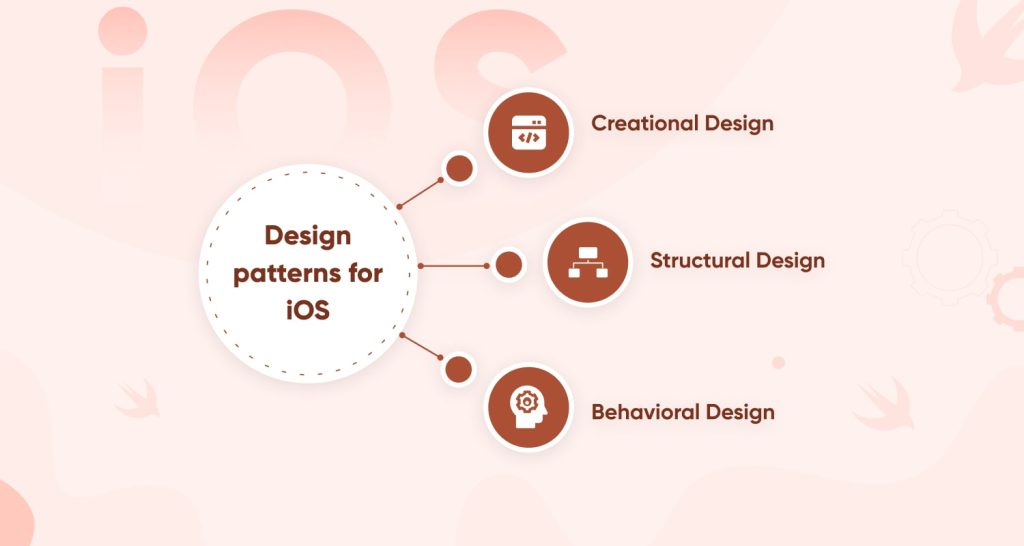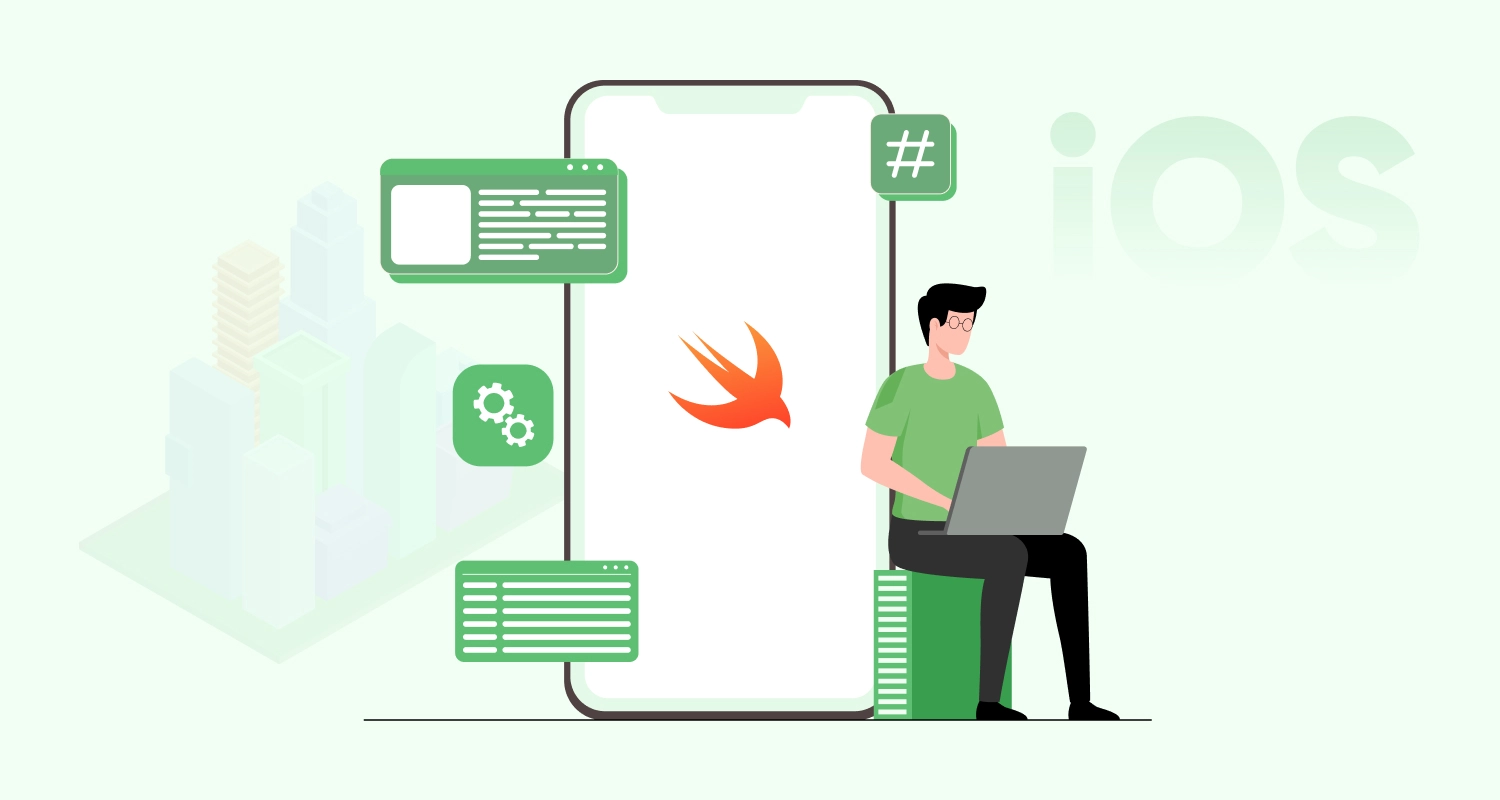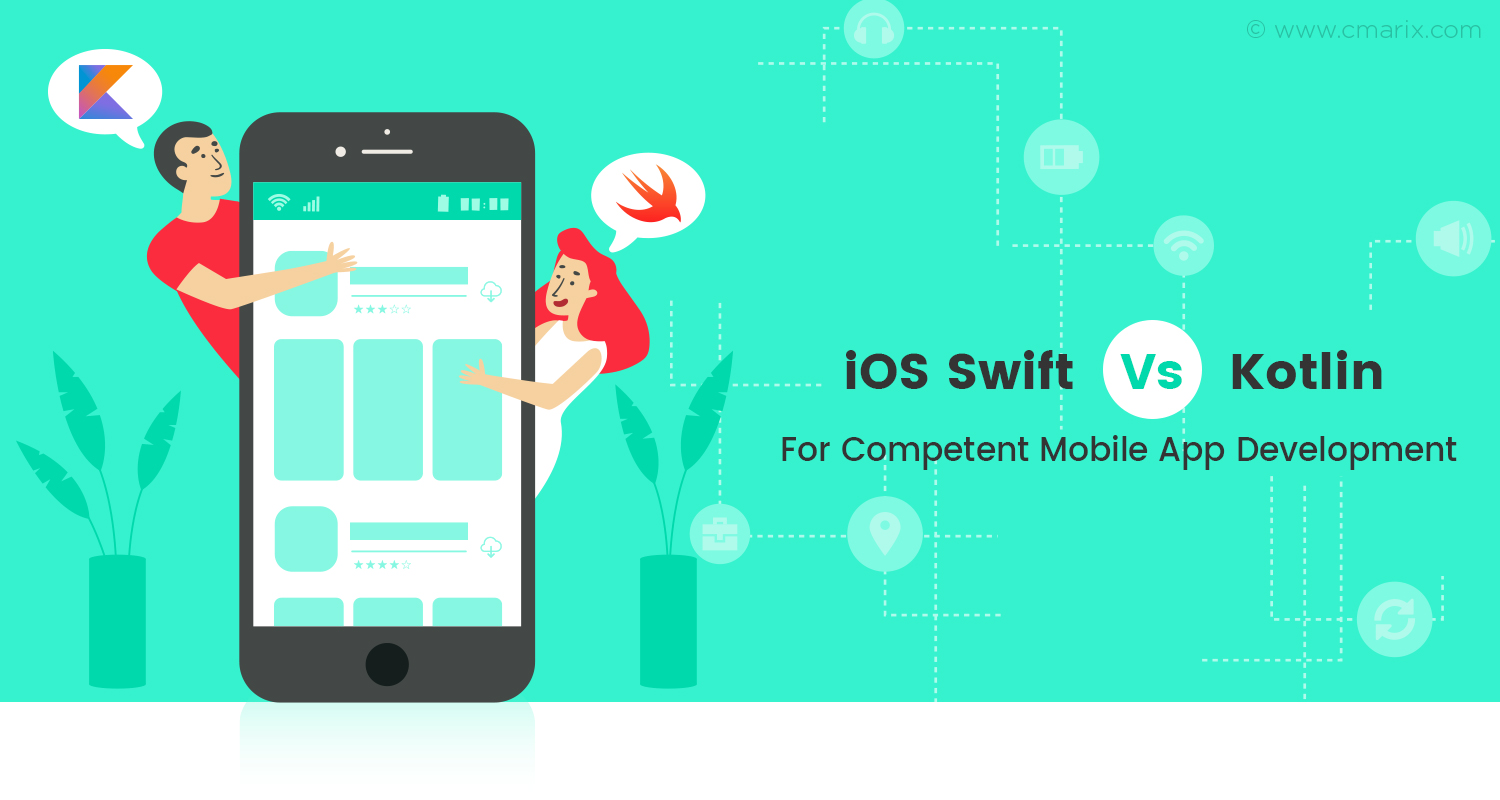Swift design patterns are crucial elements of iOS app development that provide reusable solutions to common problems faced by developers. These patterns enable developers to create high-quality, scalable, and maintainable code that can be easily understood by other developers. In 2025, the demand for iOS apps is expected to rise, and developers need to stay updated with the latest design patterns to deliver the best possible user experience. Swift design patterns offer developers a way to simplify the app development process, reduce development time, and enhance app performance.
In this article, we will explore the top Swift design patterns that ios developers should consider using in 2025. We will discuss the different types of design patterns, including creational, structural, and behavioral patterns, and how they can be applied to app development. We will also highlight some of the benefits of using Swift design patterns and provide examples of popular iOS apps developed using these patterns. By the end of this blog, you will have a better understanding of how to select the right Swift design pattern for your swift app development projects.
What are the Swift Design patterns?
Swift design patterns are widely used by iOS developers to create high-quality mobile apps. These patterns ensure that the code is well-organized, easy to maintain, and scalable. With the help of these patterns, developers can avoid common pitfalls and create robust applications. Whether you are working for an iPhone App Development Company in India or anywhere else in the world, using these patterns can greatly improve the quality of your code as well as your app’s overall user experience.
For a mobile app development company, understanding and using iOS design pattern is essential for creating high-quality and successful iOS apps. By using design patterns, developers can ensure that the code they create is modular, flexible, and easy to modify or extend. This, in turn, can reduce development time and improve app performance.
Some examples of Swift design patterns that are commonly used in app development include the Model-View-Controller (MVC) pattern, the Singleton pattern, the Adapter pattern, and the Observer pattern. Each of these patterns has a specific purpose and can be applied to different parts of an iOS app. Overall, understanding and using swift factory pattern is essential for building robust and maintainable iOS apps.
Design patterns for iOS app development types:
In Swift app development, design patterns play an essential role in building high-quality, robust, and scalable applications. Design patterns ios are reusable solutions to commonly occurring software design problems. They provide a standard way to solve a specific problem, making code easier to read, maintain, and test.
There are several types of design patterns in swift app development, including Creational Design Patterns, Structural Design Patterns, and Behavioral Design Patterns. Let’s take a closer look at them all.

1. Creational Design Pattern Swift
The process of object creation is the focus of creational design patterns. They deal with how objects are created and initialized. Creational patterns are useful in promoting flexibility, reusability, and maintainability in iOS app development.
One of the most popular creational design patterns in Swift is the Singleton pattern. A single instance of a class is created and accessible from anywhere in the world thanks to the Singleton pattern. This pattern is commonly used for managing global resources, such as network managers, user preferences, and caching.
Another creational design pattern in Swift is the Builder pattern. The Builder pattern separates the construction of a complex object from its representation, allowing the same construction process to create different representations. This pattern is useful for creating objects that require multiple steps or configurations, such as UI elements or database models.
2. Structural Design Patterns Swift
Structural design patterns are concerned with the composition of classes and objects to form larger structures. They help to organize code and simplify complex relationships between objects. Structural patterns are useful in promoting flexibility, reusability, and maintainability in iOS app development.
One of the most popular structural design patterns in Swift is the Model-View-Controller (MVC) pattern. The MVC pattern separates the application into three interconnected components: the Model, View, and Controller. This pattern is useful for creating scalable and maintainable applications by separating concerns and promoting code reuse.
Another popular structural design pattern in Swift is the Facade pattern. The Facade pattern provides a simple interface to a complex subsystem, making it easier to use and understand. This pattern is useful for hiding implementation details and reducing coupling between subsystems.
3. Behavioral Design Patterns Swift
Behavioral design patterns are concerned with the communication between objects and the assignment of responsibilities between objects. They help to define the behavior of objects and simplify complex interactions between objects. Behavioral patterns are useful in promoting flexibility, reusability, and maintainability in swift app development.
One of the most popular behavioral design patterns in Swift is the Observer pattern. The Observer pattern defines a one-to-many relationship between objects, where changes to one object are automatically propagated to its observers. This pattern is useful for decoupling objects and promoting loose coupling between components.
Another popular behavioral design pattern in Swift is the Delegate pattern. The Delegate pattern allows one object to delegate tasks or responsibilities to another object. This pattern is useful for separating concerns and promoting code reuse by allowing objects to specialize in specific tasks.
In addition to these design pattern, there are several iOS architecture patterns that are commonly used in swift app development, including Model-View-ViewModel (MVVM), Model-View-Presenter (MVP), and Clean Architecture. These architecture patterns provide a framework for organizing code and promoting scalability, reusability, and maintainability.
Design Patterns are frequently utilized in iOS apps.
Design patterns are commonly used in iOS app development to provide standardized solutions to commonly occurring software design problems. Some of the most commonly used design patterns in swift app development include the Builder, Facade, MVC, Singleton, and Adapter patterns. Consider each of these patterns in more detail.

Builder Pattern:
The Builder patterns allow different representations to be created using the same construction process by separating the construction of a complex object from its representation. In iOS app development, this pattern is often used for creating complex UI elements or database models that require multiple configurations.
Facade Pattern:
The Facade pattern provides a simple interface to a complex subsystem, making it easier to use and understand. This pattern is often used in iOS app development to hide implementation details and reduce coupling between subsystems.
MVC Pattern:
The Model-View-Controller (MVC) pattern is one of the most widely used architecture patterns in swift app development. It separates an application into three interconnected components: the Model, View, and Controller. The Model represents the data and business logic, the View displays the data to the user, and the Controller handles user interactions and updates the Model and View as needed.
Singleton Pattern:
The Singleton pattern ensures that there is only ever one instance of a class, and it provides a single, centralized point of access to that single instance. This pattern is often used in iOS app development for managing global resources, such as network managers or caching.
Adapter Pattern:
The Adapter pattern allows objects with incompatible interfaces to work together by creating a bridge between them. In building an iOS App, this pattern is often used for adapting existing APIs or libraries to work with new applications.
Decorator Pattern:
By using the Decorator pattern, custom behavior can be added to a single object at any time, whether statically or dynamically, without affecting any other objects of the same class.
In iOS app development, this iOS design patterns is often used to add new functionalities to existing objects.
Template Method Pattern:
The Template Method pattern defines the skeleton of an algorithm in a superclass, allowing subclasses to modify certain steps of the algorithm without changing its overall structure. In iOS app development, this pattern is often used for implementing reusable components with a standard behavior.
MVVM Pattern:
The Model-View-ViewModel (MVVM) pattern is similar to the MVC pattern, but it adds a ViewModel layer between the Model and View. The ViewModel acts as an intermediary between the View and Model, exposing the data from the Model in a way that is easy for the View to consume. In swift app development, this pattern is often used for building complex user interfaces with reusable components.
Observer Pattern:
When one object’s state changes, all dependent objects are automatically notified and updated thanks to the Observer pattern’s one-to-many dependency definition. In iOS app development, this pattern is often used for implementing event-driven architectures and for handling notifications from system components.
VIPER Pattern:
The VIPER pattern is an application of the Model-View-Controller (MVC) pattern that adds several layers of abstraction to improve separation of concerns and make the code more testable. The VIPER pattern consists of five layers: View, Interactor, Presenter, Entity, and Router. In swift app development, this pattern is often used for building scalable and maintainable applications.
Factory Method Pattern:
The Factory Method pattern defines an interface for creating objects, but leaves the subclasses to decide which class to instantiate. In iOS app development, this pattern is often used for creating objects whose type is not known until runtime, or for decoupling the client code from the concrete classes.
How to Choose the Best Swift Design Patterns?
Choosing the appropriate Swift design patterns is essential for crafting an effective and proficient mobile application. These patterns, which have been extensively tested, offer standard solutions for common problems encountered in the development of an app. Thus, they provide a consistent approach to designing and constructing mobile apps. Here are some vital aspects to consider when selecting Swift design pattern for your mobile app design services:
- Identify the problem you are trying to solve: Before choosing a design pattern, you need to understand the problem you are trying to solve. This will help you determine which pattern is the best fit for your specific use case.
- Consider scalability: Make sure the design pattern ios you choose is scalable, meaning it can accommodate future changes and growth of the app.
- Follow industry best practices: It’s important to follow industry best practices when selecting Swift design patterns. This will ensure that your app is built using the latest and most effective design techniques.
- Prioritize user experience: Always prioritize user experience when selecting Swift design patterns. Choose patterns that provide a seamless and intuitive user experience.
- Consult with experts: If you’re unsure which Swift design patterns to choose, consult with experts in mobile app design services. They can help you select the patterns that are best suited to your app and your users’ needs.
Overall, selecting the right Swift design patterns is essential to creating a successful mobile app that provides a great user experience.

The Advantages of Using Swift Design Patterns
Using Swift design patterns in swift app development offers several benefits, including improved code reusability, scalability, maintainability, and flexibility. Design patterns provide a structured approach to solving common software development problems, making it easier to develop high-quality, well-architected code.
Swift Design Patterns Used in Popular iOS Apps:
Many popular iOS apps have been developed using Swift design pattern, including:
- Instagram: Instagram uses the Model-View-Controller (MVC) design pattern, which is a common pattern used in swift app development.
- Lyft: Lyft uses the Singleton design pattern, which is used to ensure that only one instance of a class exists in a program.
- Evernote: Evernote uses the Observer design pattern, which allows objects to be notified when the state of another object changes.
- Slack: Slack uses the Facade design pattern, which provides a simple interface to a complex system.
- Airbnb: Airbnb uses the Decorator design pattern, which allows new functionality to be added to an object without changing its original implementation.
Overall, using Swift design pattern can help Swift app developers build high-quality, maintainable, and scalable iOS apps.
Conclusion
In conclusion, incorporating Swift design pattern is a crucial aspect of developing high-quality iOS applications in 2025. The utilization of patterns such as MVC, MVVM, Singleton, Observer, Decorator, and Factory enables developers to create efficient and maintainable code, minimize development time, and enhance the user experience of their applications. For businesses looking to create top-notch iOS apps in 2025, it is recommended to hire iPhone app developers with expertise in Swift design patterns. By doing so, they can ensure that their apps are built using the best practices and standards, resulting in feature-rich and exceptional applications that meet their specific requirements.
Frequently Asked Questions
What Is the Most Popular iOS Architecture?
The most popular iOS architecture is the Model-View-Controller (MVC) pattern.
How Many Design Patterns Are There in iOS?
There are several design patterns commonly used in iOS development, including MVC, MVVM, Singleton, Delegate, and Observer patterns, among others.
What Are the Most Significant Design Patterns for iOS?
Some of the most important patterns in iOS development are Model-View-Controller (MVC), Delegation, Singleton, Observer, and Factory patterns.







